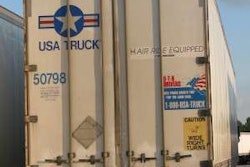A recent analysis by Transportation Fundamentals author Noël Perry throws into question whether proposed government actions to incent greater use of freight rail actually will result in a greener transport system.
However, Perry suggests that reductions in greenhouse gas emissions can be achieved through improved access to intermodal terminals, equalization of rail and truck standards for production of potent NOx exhaust, and modifying existing truck size and weight regulations.
The analysis is contained in the December issue of Transport Fundamentals, the last of a four-part discussion of the economics of truck and rail competition.
“Existing market forces have already done an excellent job of maximizing fuel efficiency by allowing rail and truck to do what they do best” Perry says. While Perry agrees that rail line haul is far more fuel-efficient than truck, he maintains that this is just part of the energy equation. Rather, he concludes that for optimal energy efficiency, one must look at the complete supply chain from start to finish, including the local pickup-and-delivery function for which flexible trucks are far more efficient than rail.
When all factors are considered, most freight currently moving by truck would consume more energy if converted to a 100 percent rail move. He suggests that maximum energy efficiency might be gained from more transloading of freight between truck and rail, where truck is used for local transport and rail for the intercity movement. Government efforts should be directed at creation of more such truck/rail interchange terminals to make this option more accessible.
Another fertile area of government action, according to Perry, would be to modify existing truck size and weight standards that have been frozen for more than 20 years even as truck safety equipment has improved. Both energy efficiency and safety would be improved, he maintains, by the operation of larger but fewer trucks.
A third major opportunity to reduce the global warming impact of the nation’s freight system would be to apply current truck standards for the emissions of potent NOx greenhouse gases to the railroads. One unit of NOx produces 310 times the global warming effect of one unit of CO2, the gas normally tracked in carbon comparisons. Because of differences in the regulation of truck and rail diesel engines, rail locomotives currently emit an average of 4.5 times more NOx per horsepower-hour than truck. Further, when looking to the future, when both truck and rail NOx emissions regulations will be tightened (truck next year and rail in 2015), new locomotives still will emit 6.5 times more NOx per horsepower hour than new trucks.











